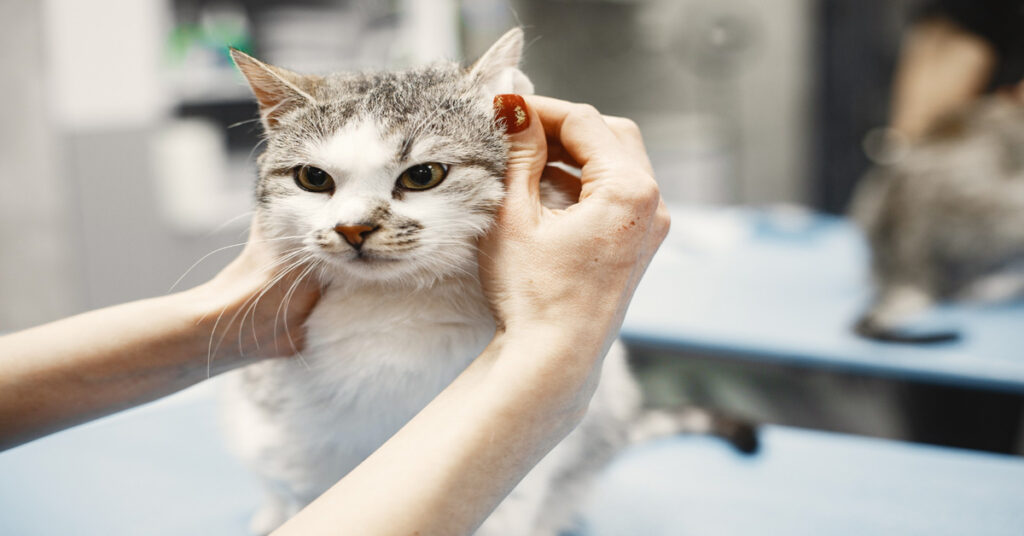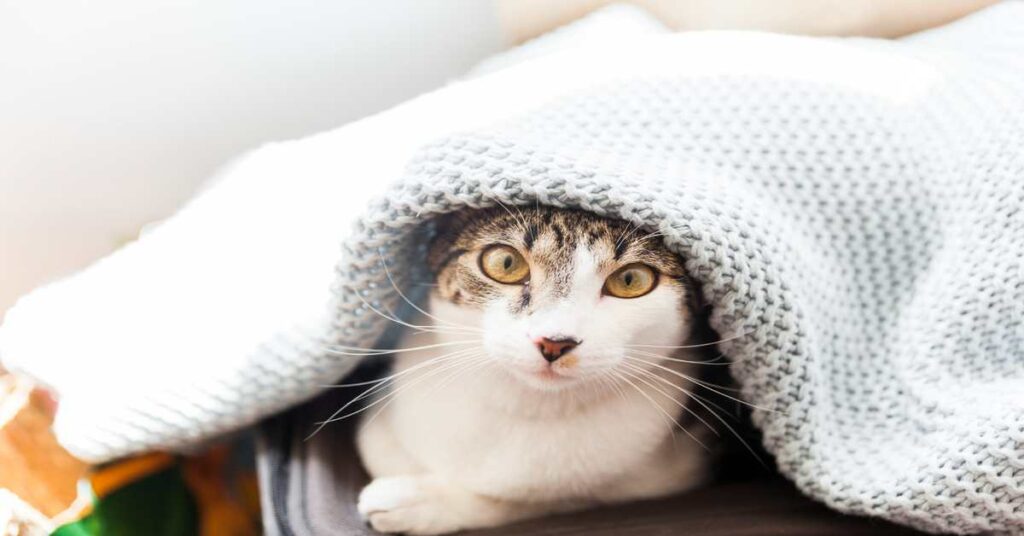How to bathe a cat? Bathing a cat can be tough. To make the process easier, start with lukewarm water. Before beginning, gather your supplies first. When your cat is ready, introduce them to the water slowly. Use a handheld sprayer or cup to wet their fur gently. Apply cat shampoo carefully, making sure to avoid the face and ears. After shampooing, rinse thoroughly with water. Once your cat is clean, dry them with a towel. Finally, offer praise and treats as a reward for their cooperation.
how to bathe a cat? Bathing a cat can be challenging, as most cats do not enjoy water. However, if your cat needs a bath due to a mess or medical reasons, here are some tips:
- Prepare Properly: Gather all necessary supplies before starting, including cat-safe shampoo, towels, and a non-slip mat for the bottom of the tub or sink.
- Trim Claws: Trim your cat’s claws beforehand to prevent scratches.
- Choose the Right Location: Use a sink or tub filled with a few inches of lukewarm water. Make sure the room is warm and draft-free.
- Stay Calm: Approach your cat calmly and gently. Speak soothingly to reassure them.
- Wet and Shampoo: Wet your cat’s fur thoroughly, avoiding the head. Use a small amount of cat shampoo and lather gently. Be careful around sensitive areas like the face and ears.
- Rinse Well: Rinse your cat thoroughly with lukewarm water, ensuring all shampoo is removed. Use a cup or handheld sprayer.
- Dry Thoroughly: Wrap your cat in a towel and gently pat dry. You can also use a hairdryer on a low, cool setting if your cat is comfortable with it.
- Reward: After the bath, praise your cat and offer treats or playtime to create positive associations with the experience.
Do Cats Need Baths?
Cats are generally adept at grooming themselves and usually do not require regular baths. Their tongues have tiny hook-like structures that help remove dirt and loose fur from their coats during grooming. However, there are some circumstances where a bath may be necessary, such as:
- Mess or Stains: If your cat gets into something dirty or sticky that they cannot clean off themselves, a bath may be needed to remove the mess.
- Medical Conditions: Cats with certain skin conditions or allergies may benefit from occasional baths with medicated shampoos prescribed by a veterinarian.
- Senior Cats: Older cats or those with mobility issues may struggle to groom themselves effectively, and may occasionally require assistance with bathing.
- Long-Haired Cats: Cats with long or thick fur may need occasional baths to prevent matting and tangles, although regular brushing can often help prevent this.
In general, most cats do not need frequent baths, and bathing them too often can strip their fur of natural oils and cause dryness and skin irritation.
What to Know Before You Bathe Your Cat
Before bathing your cat, there are several important things to consider:
- Cats’ Natural Distrust of Water: Most cats are not fond of water, so be prepared for potential resistance during the bathing process.
- Health Considerations: Ensure your cat is healthy enough for a bath and doesn’t have any skin conditions or injuries that could be aggravated by bathing.
- Proper Supplies: Gather all necessary supplies, including cat-safe shampoo, towels, a non-slip mat for the bathing area, and treats for positive reinforcement.
- Bathing Area: Choose an appropriate bathing area, such as a sink or bathtub, and make sure it’s prepared with a few inches of lukewarm water and a non-slip surface.
- Trimming Claws: Consider trimming your cat’s claws beforehand to minimize scratches, but be cautious not to cause any discomfort.
- Introduction to Water: Introduce your cat to the water gradually and use gentle techniques to wet their fur, avoiding the face and ears.
- Patience and Calmness: Approach the bathing process with patience and calmness, as your cat may become anxious or stressed.
- Post-Bath Care: Have towels ready to dry your cat thoroughly after the bath, and offer praise and treats to make the experience more positive.
How to bathe a cat?
Preparing for Your Cat’s Bath

Preparing for your cat’s bath involves several important steps:
- Gather Supplies: Collect all necessary supplies before beginning, including cat-safe shampoo, towels, a non-slip mat for the bathing area, and treats for positive reinforcement.
- Choose the Bathing Area: Select an appropriate location for the bath, such as a sink or bathtub. Ensure the area is free from drafts and distractions.
- Prepare the Water: Fill the bathing area with a few inches of lukewarm water. Test the temperature to ensure it’s comfortable for your cat.
- Trim Claws (Optional): Consider trimming your cat’s claws beforehand to minimize scratches. Be cautious not to trim too closely or cause discomfort.
- Create a Calming Environment: Keep the room quiet and calm to reduce your cat’s stress levels. Close doors and windows to prevent escape attempts.
- Have a Plan: Plan out your bathing process, including how you will wet your cat, apply shampoo, rinse, and dry them. Having a clear plan can help the process go more smoothly.
- Stay Calm and Patient: Approach the bath with a calm and patient attitude. Your cat may sense your emotions, so remaining relaxed can help keep them calm as well.
By preparing for your cat’s bath in advance and following these steps, you can help ensure a more successful and less stressful bathing experience for both you and your cat.
How to bathe a cat?
Where to Bathe Your Cat
When bathing your cat, it’s essential to choose the right location. Here are some options:
- Sink: Many cats feel secure in a sink, especially if it’s small and enclosed. It’s also at a convenient height for you to reach.
- Bathtub: A bathtub provides more space for larger cats and allows you to control the water temperature more easily. Additionally, place a non-slip mat at the bottom to prevent slipping.
- Shower Enclosure: Some cats may tolerate bathing in a shower enclosure, especially if they’re already accustomed to being in the bathroom.
- Portable Tub: If you prefer bathing your cat outside, consider using a portable tub or basin filled with lukewarm water.
- Professional Groomer: If your cat is particularly resistant to bathing or requires special handling, you may opt to take them to a professional groomer who has experience with cats.
Ultimately, the best location for bathing your cat is wherever they feel most comfortable and secure.
Supplies You’ll Need to Bathe Your Cat
To bathe your cat, gather these supplies:
- Cat-Safe Shampoo: Choose a gentle, specifically formulated shampoo designed for cats to avoid skin irritation.
- Towels: Have several towels on hand for drying your cat after the bath. Opt for soft, absorbent towels that won’t irritate their skin.
- Non-Slip Mat: Place a non-slip mat in the bathtub or sink to provide traction and prevent your cat from slipping during the bath.
- Cotton Balls or Pads: Use cotton balls or pads to clean your cat’s ears gently. Avoid inserting anything into the ear canal.
- Treats: Have some of your cat’s favorite treats on hand to reward them for good behavior during and after the bath.
- Brush or Comb: Use a brush or comb to remove any tangles or mats from your cat’s fur before bathing them.
- Water Container: Use a cup or pitcher to wet your cat’s fur gently during the bath. Avoid spraying water directly on their face.
- Grooming Gloves (Optional): Grooming gloves can be helpful for wetting and shampooing your cat’s fur while providing a gentle massage.
How to bathe a cat? Hold Your Cat
When holding your cat, it’s important to do so in a way that feels secure and comfortable for both you and your feline friend. Here’s a step-by-step guide:
- Approach Calmly: Approach your cat calmly and slowly to avoid startling them.
- Gently Support the Body: Place one hand under your cat’s chest or front legs to support their weight.
- Support the Hindquarters: Use your other hand to support your cat’s hindquarters, ensuring they feel stable and secure.
- Keep Them Close: Hold your cat close to your body to provide a sense of security and prevent them from wriggling or trying to escape.
- Avoid Restricting Movement: Allow your cat to move their head and limbs freely to reduce stress and discomfort.
- Observe Their Body Language: Pay attention to your cat’s body language and vocalizations. If they seem tense or uncomfortable, gently release them and try again later.
- Be Patient: Some cats may take time to adjust to being held, especially if they’re not used to it. Be patient and try to make the experience as positive as possible.
Tips for Keeping Your Cat Calm
Here are some tips to keep your cat calm:
- Provide a safe space.
- Use pheromone products.
- Stick to a regular routine.
- Handle gently.
- Offer environmental enrichment.
- Use calming scents.
- Avoid overstimulation.
- Schedule regular vet checkups.
- Minimize household changes.
How to bathe a cat?
Step-by-Step
Here’s a step-by-step guide on how to bathe a cat:
- Prepare the Bathing Area: Fill a sink or bathtub with a few inches of lukewarm water. Place a rubber mat at the bottom to prevent slipping.
- Gather Supplies: Collect all necessary supplies, including cat-safe shampoo, towels, a non-slip mat, and treats for afterward.
- Trim Claws (Optional): Consider trimming your cat’s claws beforehand to minimize scratches, but be careful not to trim too close.
- Introduce Your Cat to Water:
Gently place your cat in the water and allow them to get used to it. Then, use a cup or pitcher to wet their fur, avoiding the face. - Apply Shampoo: Use a small amount of cat shampoo and lather it into your cat’s fur, starting from the neck and working your way down. Additionally, be gentle and avoid getting shampoo in their eyes and ears.
- Rinse Thoroughly: Rinse your cat with lukewarm water, ensuring all shampoo is washed away. Use a cup or pitcher to pour water gently over their body.
- Dry Your Cat: Wrap your cat in a towel and gently pat dry, absorbing as much water as possible. You can also use a hairdryer on a low, cool setting if your cat tolerates it.
- Reward Your Cat: After the bath, praise your cat and offer treats to make the experience more positive.
Remember to stay calm and patient throughout the bathing process, and be prepared for your cat to resist or become stressed.
Read more about cat’s fact
How to bathe a cat? FaQs
How often should you wash your cat?
In general, most cats do not need frequent baths as they are capable of grooming themselves effectively. However, there are some circumstances where bathing may be necessary. For instance, when a cat gets into something dirty or sticky that they cannot clean off themselves, or if they have certain medical conditions that require regular bathing with medicated shampoos prescribed by a veterinarian.
For most cats, bathing should be done infrequently, only when necessary. Over-bathing can strip their fur of natural oils and cause dryness and skin irritation. It’s essential to observe your cat’s grooming habits and overall health to determine if and when bathing is needed. If you’re unsure, consult with your veterinarian for personalized guidance based on your cat’s individual needs
Is it okay to bathe my cat at night?
Yes, it’s okay to bathe your cat at night. Timing isn’t critical. Create a calm environment. Dry your cat thoroughly after the bath. Ensure your cat is comfortable.
Is there an easy way to bathe a cat?
Yes, there are some tips to make bathing a cat easier:
- Be Prepared: Gather all necessary supplies before starting.
- Choose the Right Time: Pick a time when your cat is calm and relaxed.
- Introduce Slowly: Gradually introduce your cat to the water to reduce stress.
- Use a Handheld Sprayer or Cup: This allows for more control when wetting your cat’s fur.
- Stay Calm: Keep a calm demeanor to help reassure your cat.
- Be Gentle: Handle your cat with care and avoid rough movements.
- Offer Treats: Use treats to reward your cat for good behavior.
- Dry Thoroughly: After the bath, dry your cat completely to prevent chilling.

How do I dry my cat after a bath?
Drying your cat after a bath is important to prevent them from getting chilled. Here’s how you can do it:
- Use Towels: Gently wrap your cat in a soft, absorbent towel. Pat them dry, starting from the head and working your way down to the tail.
- Avoid Rubbing: Avoid vigorously rubbing your cat with the towel, as this can cause discomfort and may lead to matting of the fur.
- Blot Excess Water: Use the towel to blot away excess water from your cat’s fur. Press the towel gently against their body to soak up moisture.
- Use a Hairdryer (Optional): If your cat is comfortable with it, you can use a hairdryer on a low, cool setting to speed up the drying process. Keep the dryer at a safe distance from your cat and avoid blowing directly into their face.
- Monitor Your Cat: Keep an eye on your cat during the drying process and watch for signs of discomfort or stress. If they seem agitated, stop and try again later.
- Offer Treats and Praise: After drying your cat, offer them treats and praise to make the experience more positive and rewarding.




